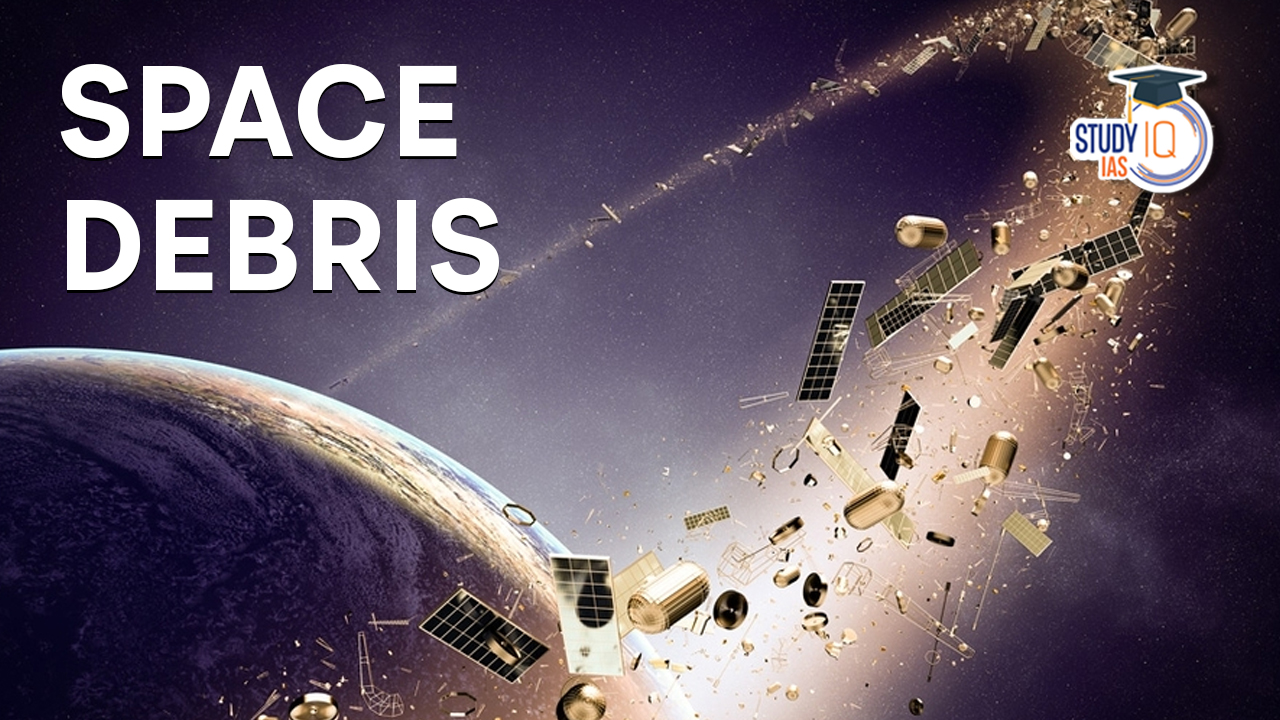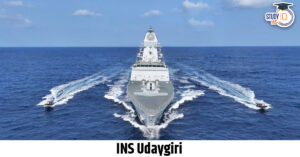Table of Contents
What is Space Debris?
- Space debris, also known as space junk, refers to man-made objects that are no longer operational and orbit Earth.
- These objects include defunct satellites, spent rocket stages, fragments from spacecraft collisions, and other discarded hardware from past space missions.
- Space debris is a consequence of decades of human space exploration. As more satellites and rockets have been launched into space, and some of them have reached the end of their operational life, they become space debris.
Current State of Space Debris
- There are currently over 10,000 active satellites in orbit around Earth.
- By the 2030s, the number of satellites is expected to increase to 100,000, with a potential rise to half a million in the following decades.
- According to NASA, there are approximately 23,000 pieces of debris larger than a softball orbiting the Earth.
- They travel at speeds up to 17,500 mph, fast enough for a relatively small piece of orbital debris to damage a satellite or a spacecraft.
- There are half a million pieces of debris the size of a marble or larger (up to 0.4 inches, or 1 centimetre), and approximately 100 million pieces of debris-about .04 inches (or one millimetre) and larger.
- There is even smaller micrometre-sized (0.000039 of an inch in diameter) debris.
- The number of satellites orbiting Earth is expected to reach 60,000 by 2030, up from the current 9,000, and the amount of untracked debris is a cause for concern.
Sources of Satellite Pollution
- Burn-up of Satellites: When satellites reenter the atmosphere, they disintegrate at high altitudes, releasing materials such as aluminum, nitrogen oxides into the stratosphere.
- Rocket Launch Emissions: The emissions from rocket launches include pollutants like black carbon, nitrogen oxides, carbon monoxide and chlorine gases, which are harmful to both air quality and climate.
- Aluminum oxide acts as a catalyst in reactions involving ozone and chlorine.
Impact on Atmospheric Chemistry
- Ozone Layer Depletion: Ozone layer absorbs up to 99% of harmful ultraviolet (UV) radiation from the sun. Pollutants like aluminum oxide are known catalysts for ozone depletion. As these materials accumulate in the stratosphere, they can react with chlorine compounds—residuals from past chlorofluorocarbon (CFC) use—to degrade ozone molecules.
- Climate Change Implications: Soot emitted from rocket engines can absorb solar energy, contributing to atmospheric warming. Copper and other metals released during spacecraft burn-up could trigger chemical reactions, potentially promoting the formation of cloud-forming particles which can alter weather patterns.
Impacts of Space Debris
- Threat to Operational Satellites: Space debris can collide with operational satellites and spacecraft, causing damage or destruction. This can lead to the loss of critical communication, navigation, weather monitoring, and remote sensing services that rely on satellites.
- Chain Reaction (Kessler Syndrome): A major collision between large objects could trigger a chain reaction known as the Kessler Syndrome, where the resulting debris creates more collisions, leading to a self-sustaining cascade that significantly increases the amount of debris in orbit.
- Risk to Human Spaceflight: Space debris poses a risk to crewed spacecraft and astronauts on the International Space Station (ISS) and other future crewed missions. Even small debris fragments can cause severe damage to spacecraft hulls and vital systems.
- Reduction of Orbital Slots: The accumulation of space debris in specific orbital regions can limit the availability of desirable orbital slots for future missions.
- Impact on Earth from Re-Entry: When larger objects or satellites re-enter the Earth’s atmosphere, some parts may survive the heat of re-entry and reach the surface. While most of the Earth’s surface is water, there is still a risk of debris hitting populated areas.
- International Tensions: As more countries engage in space activities, disputes may arise concerning responsibility for space debris mitigation and liability for damages caused by collisions involving spacecraft from different nations.
| Space Projects of India and Other Countries | |
| India |
|
| Global |
|
Way Forward
- Debris Mitigation Guidelines: Develop and implement debris mitigation guidelines and standards for spacecraft and rockets.
- These guidelines should include measures to minimize the creation of new debris, such as designing satellites with propulsion systems to deorbit them at the end of their operational life.
- Active Debris Removal: Research and develop technologies for actively removing space debris from orbit.
- This can involve using robotic spacecraft to capture and deorbit defunct satellites or debris objects.
- Space Situational Awareness (SSA): Enhance SSA capabilities to track and catalog space debris more effectively. This information is vital for space traffic management and collision avoidance efforts.
- SSA refers to the capability to monitor, track, and understand the space environment, including the location and behavior of space objects such as satellites, spacecraft, and space debris.
- Gravitational Disposal: By using the gravity of the Moon or Earth to guide debris to crash into a designated uninhabited region or safely burn up in the atmosphere, the risk of future collisions can be reduced.
- Satellite End-of-Life Disposal: Require satellite operators to plan for and execute end-of-life disposal maneuvers to remove satellites from operational orbits and move them to graveyard orbits or safely deorbit them.
- International Cooperation: Establish agreements and guidelines that promote responsible behavior in space and address issues related to liability for space debris.
- Reusable Launch Vehicles: Switching from single-use rockets to reusable launch vehicles will help cut down on the number of new debris produced during launches.


 INS Udaygiri, Key Features, Capabilities...
INS Udaygiri, Key Features, Capabilities...
 Mental Healthcare in India, Scope and Go...
Mental Healthcare in India, Scope and Go...
 Most Commonly Used Cancer Drugs and Thei...
Most Commonly Used Cancer Drugs and Thei...





















